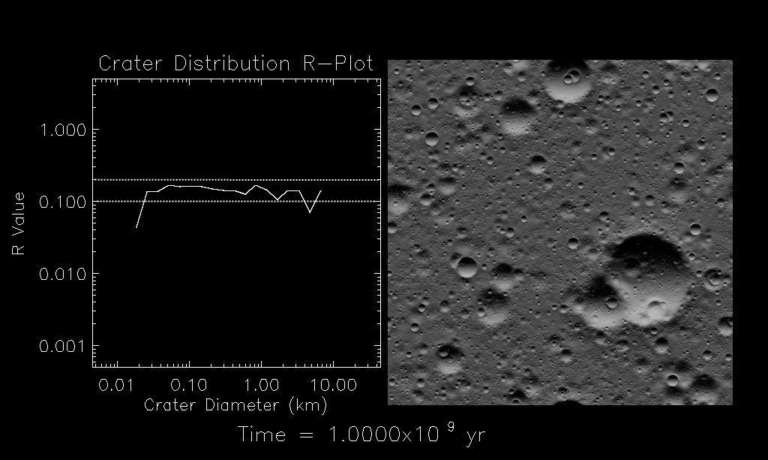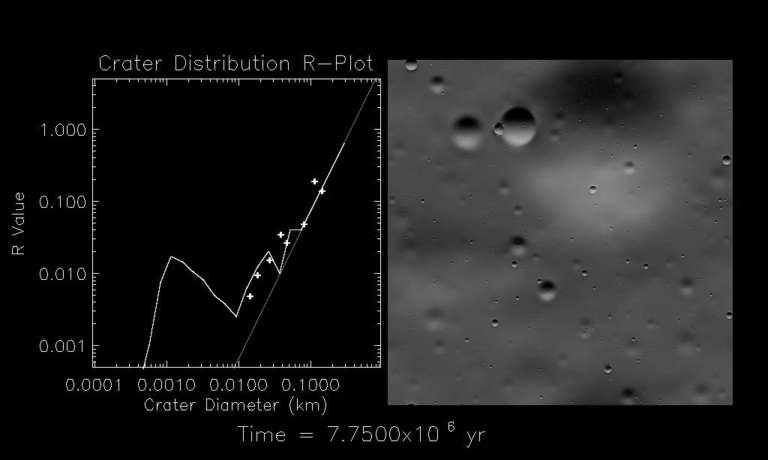Emily Lakdawalla • Mar 25, 2013
LPSC 2013: The Smaller They Are, The Better They Shake
I only returned from the Lunar and Planetary Science Conference yesterday and spent nearly all of today replying to a week's worth of email and taking care of loose ends. So it is just awesome that one of the things that was cluttering my inbox was an email from scientist Jim Richardson with really cool movies that propose to explain how the same physics of impact cratering can produce such differently-appearing surfaces as those of the Moon, large asteroids like Eros, and teeny ones like Itokawa. (Here's his abstract, and here's an electronic version of his poster.)
To set the stage, consider the surface of the Moon:

And Eros:

And Itokawa:
Jim's work deals primarily with the physics of impact cratering and how they produce different-appearing planetary surfaces. In the past, I've reported on how he produced models of the cratered surfaces of Saturn's moons, and used them to learn about how the sizes of comets could've changed with time. This time around, he asked: how does seismic shaking affect cratered surfaces? When an impactor hits any body, it generates earthquake waves that jiggle the surface. This jiggling has two main effects on surfaces composed of weakly connected pieces, which is what these heavily cratered things' uppermost layer (called regolith) is made of. First, it acts to flatten out any topography. Second, it tends to cause little grains to fall down between big grains, leaving a pavement of gravel and coarser stuff on top with the dust hidden below.
Jim was interested mostly in the first effect. What he found was that the different appearances among these three surfaces mostly hinges upon the way that their different surface gravity affects how well this seismic shaking can move particles around the surface.
Here's what happens on the Moon, which is sort of the standard by which all other cratered surfaces are judged. It's the result of one of Jim's simulations, looking at a fairly small scale by comparison to the size of the Moon (notice that the largest craters are about 10 kilometers across). Lunar gravity is lower than Earth but still significant, at 1.63 m/s2. Jim wrote: " In the lunar gravity field, impact-induced seismic shaking is a 'local' event, affecting the area directly around each newly formed crater only."

Here's the same size area on Eros. Jim says that in this regime, where the acceleration due to gravity is only 0.005 m/s2, "impact-induced seismic shaking is a much more widespread event, with each new impactor of a few meters in diameter producing a 'global' seismic event that slowly degrades craters over time, especially the smallest visible craters."

Finally, here's Itokawa. We're looking at a much smaller scale here, because Itokawa is so small; the smallest craters are 20-ish meters in size. The force of gravity here is 50 times less than on Eros, only 0.0001 m/s2. Jim says: "In the Itokawa gravity field, impact-induced seismic shaking is a major, surface-affecting phenomenon, with each new impactor of a few centimeters in diameter producing a 'global' seismic event that rapidly degrades craters over time, even the largest ones produced on the surface."

Now, the similarity between the crater size distributions that Jim created in these three simulations didn't just happen; he took the known size-frequency distributions and used them to determine some of Eros' and Itokawa's physical parameters (for instance, those that describe how efficiently the interior of each body transmits seismic waves).
Do you want to see these simulations in action? You're in luck, because Jim sent me movies, too. Enjoy! The lunar and Eros ones cover the same area, about 13.5 by 9 kilometers, while the Itokawa one covers a much smaller area, 279 by 186 meters.
Support our core enterprises
Your support powers our mission to explore worlds, find life, and defend Earth. You make all the difference when you make a gift. Give today!
Donate

 Explore Worlds
Explore Worlds Find Life
Find Life Defend Earth
Defend Earth


